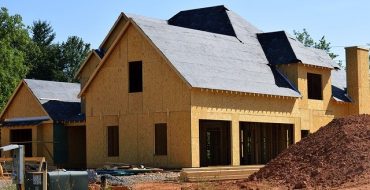
A robust post-coronavirus economic recovery revolves around opening industries and businesses quickly but safely. Non-urban, single-family residential construction must be part of that first wave.
State governors’ shutdown of everything, everywhere must rapidly evolve into nuanced policies of not just which industries can open, but which related businesses can as well. Retire the broad brush; engage a surgeon’s precise decision-making.
Little is comparable about building a house in the Hudson Valley, a skyscraper in Manhattan or a hotel in New Jersey. Single-family non-urban residential construction can be socially distant, have staggered schedules, is partially outdoors and typically comprised of small teams where self-reporting of illness would be immediate, contained and traceable.
New York Gov. Andrew Cuomo’s weekend announcement that such construction could get a green light in selected regions was a crucial first step. Regulations could be quickly disseminated and enforced. The residential construction industry can handle rules; it complies with building codes, zoning codes and architectural plans every day, and there are layers of control and enforcement. Contractors in violation could have job sites shuttered, trucks impounded and fines levied.
Construction spending drives an array of industries, governments and small businesses. Electric and plumbing supply houses, lumber yards, framing crews, excavation companies, tile companies, surveyors, engineers — these are examples of hundreds of diverse companies that comprise an outsized portion of not just consumer spending, but sales-tax revenue, building-permit revenue, planning board fees and increases in municipalities’ assessment valuations. Additionally, homeowners could continue to invest, building inspectors would be busy, supply houses can buy and sell, bankers can lend, lunch spots can fire up the stove and so much more.
While private industry may be roaring to go, the public sector will lag for months or longer.
In New York State, openings will face municipal bottlenecks. Typically understaffed health and building departments will have to catch up on permits and inspections that have been accumulating. Still, it’s time to move forward.
Additionally, why has the construction industry had to sit idly by? Beer stores, fast-food restaurants, convenience stores and pizzerias interact with millions of people a day. Construction workers on a team of four can’t be family breadwinners? In that aspect, who can argue about the legitimacy of “Reopen Now” protests?
What can be done and must be done should occur immediately. Well-regulated single-family residential construction can lead the way to normalcy and routine. Let’s get to work.